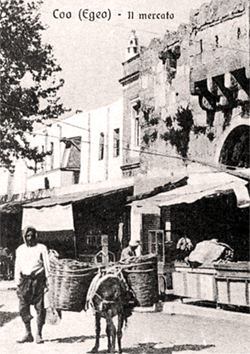Autore: S. Todaro
scarica l’articolo in formato .pdf: From scatters of pottery to communities? Issues of function, temporality and mobility in the construction of the settled landscape of the Prepalatial Mesara (south-central Crete): a view from Phaistos
Negli ultimi trent’anni il problema della nascita dei palazzi a Creta, visto che l’esemplificazione della nascita dello stato, è stato affrontato concentrandosi sulla componente demografica di quei siti che all’inizio della media età del Bronzo diventarono centri palatini. Nel caso di Festòs, situata nella Creta meridionale, sono state avanzate due proposte molto diverse sulle dimensioni del sito e sulla sua componente demografica, calcolata a partire da due opposte concezioni dell’organizzazione e struttura interna del sito: agglutinata o sparsa. Partendo dai risultati di uno studio recente che ha consentito di assegnare le varie strutture e depositi Prepalaziali ad una specifica fase di occupazione del sito stabilita su base stratigrafiche, in questo articolo si propone una lettura diversa del sito e delle strategie insediative in atto nella regione della Messarà, che meglio si adatta all’ambiente paludoso e a tratti malsano quale ricostruito in un recente studio paleo-ambientale. Lungi dall’essere un insediamento che attraverso le varie fasi del Prepalaziale cresce fino a diventare un centro proto-urbano e quindi un centro palatino, Festòs appare un sito cerimoniale a valenza regionale, un punto di riferimento per una vasta popolazione che di norma vive sparsa nel territorio -katà komas, ma periodicamente si riunisce sulla collina del palazzo che comincia a configurarsi come la capitale spirituale una regione che, per comprensibili ragioni di tipo ambientale, era caratterizzata da una intensa mobilità residenziale.
Recent advances in Minoan archaeology have highlighted that the rise of the First Palaces, and the emergence of the early state, can be addressed by focusing on the scale of those communities that developed into palatial centres and on the level of hierarchy documented by the settlement systems of their regions. In the case of the palatial site of Phaistos in south-central Crete, however, two contrasting estimations of site extent and population size have been proposed, aligned to two contradictory interpretations of settlement and residential strategies (nucleation vs dispersed). Building on a thorough reassessment of stratigraphy, phasing and formation processes at Phaistos, taking into account the results of all previous excavations at the site, this paper builds up an understanding of settlement and residential strategies at Phaistos and its wider region. When combined with the results of recent geomorphological studies in the vicinity of Phaistos a radical new picture of the site and how it functioned emerges for the crucial period leading up to the emergence of the palace. The results of the paper challenge the orthodoxy that Phaistos urbanises to become a major nucleated population centre just before the construction of the palace. Instead Phaistos emerges as a regional ceremonial centre, from the end of the Neolithic, with the hilltop given over to open areas, which were progressively formalized and monumentalized, while the western and southern slopes of the palace hill were occupied by structures where specialized craft activities were carried out. While there is plentiful evidence for large-scale gatherings of people on the hilltop, and communal production on the western slope, these groups derived from the surrounding region, with residential activity at Phaistos itself limited, low-density and shifting, save only for during major periods of palatial building activity.

